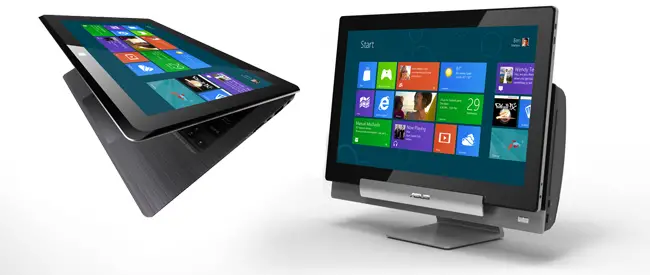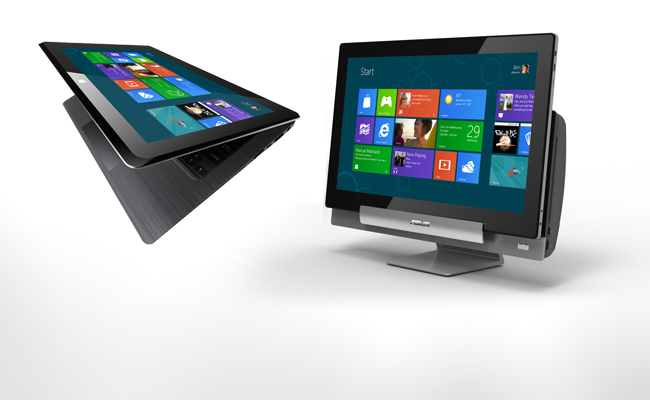ASUS’ Windows 8 PCs: Crazy or innovative?

For years, computer manufacturers seemed to be stuck in a rut, rolling out the same–or similar–form factors time and again. Lately, however, this has started to change. ASUS seems to be at the forefront of this movement, experimenting with devices like the Transformer, which allows you to detach the keyboard and transform the device into a tablet. With Windows 8 just around the corner, manufacturers are once again taking things a step further and ASUS is leading the charge a second time. The Taiwanese company has five brand-new Windows 8 PCs on display at Computex, including the TAICHI and the Transformer AiO. Both devices are very unique, instantly standing out in a sea of similar models. But are they innovative? Or are they just crazy experimental devices that will never hit the market–or worse, won’t sell?
The ASUS Transformer AiO, for those who aren’t familiar with it, is an 18.4-inch All-in-One PC running Windows 8. Detaching it from its dock, however, turns the device into a massive Android tablet. It’s an interesting design and has a lot of useful applications, despite its somewhat unwieldy size. But the Transformer AiO’s strongest selling point could also be its biggest weakness. Turning your Windows 8 PC into an Android tablet is all well and good if you prefer the Android ecosystem and its large selection of apps, but what if you’d like to continue using Windows 8 away from the dock? The PC will allow you to remote desktop into Windows 8 while in tablet mode, but leaving your local network will completely separate you from the Windows 8 experience. Furthermore, this dual-OS design is in addition to the Metro and desktop environments in Windows 8. Will customers get confused switching between three different UIs and two different operating systems? Swapping devices is one thing, but having a completely separate experience on the same exact device might be too much for the average consumer, making the Transformer AiO an enthusiast-only PC.
The second device of note from ASUSTeK Computer Inc. is the TAICHI. This computer is essentially one of the company’s Zenbooks with a second screen. But unlike the slide-out companion screens found on a handful of laptops, the ASUS TAICHI’s second equally-sized screen sits on the top of the lid, back-to-back with the traditional primary display. The result is a thin and light 11.6- or 13.3-inch laptop which, when closed, operates like a tablet. The screens can also be used in tandem, allowing you to share the device with a friend or colleague sitting across from you. In keeping with the Android theme, it will support running Android apps through BlueStacks.
As someone planning to buy a new PC this fall, I find the ASUS TAICHI incredibly appealing. The practicality of using both screens at the same time is questionable, but the slim Zenbook design combined with a swivel-less way to transform it into a tablet sounds great. Plus, it’s just downright cool. The biggest question marks at this point are the price and battery life, seeing as it won’t have an ARM processor. My current laptop is – or, rather, was – made by ASUS, and I’ve had a great track record with the company thus far.
The ASUS Transformer AiO and TAICHI are still a few months away from hitting the market, but it’s exciting to finally get a look at some of the out-of-the-box concepts manufacturers are coming up with for Windows 8. I only hope this trend continues into the future.


